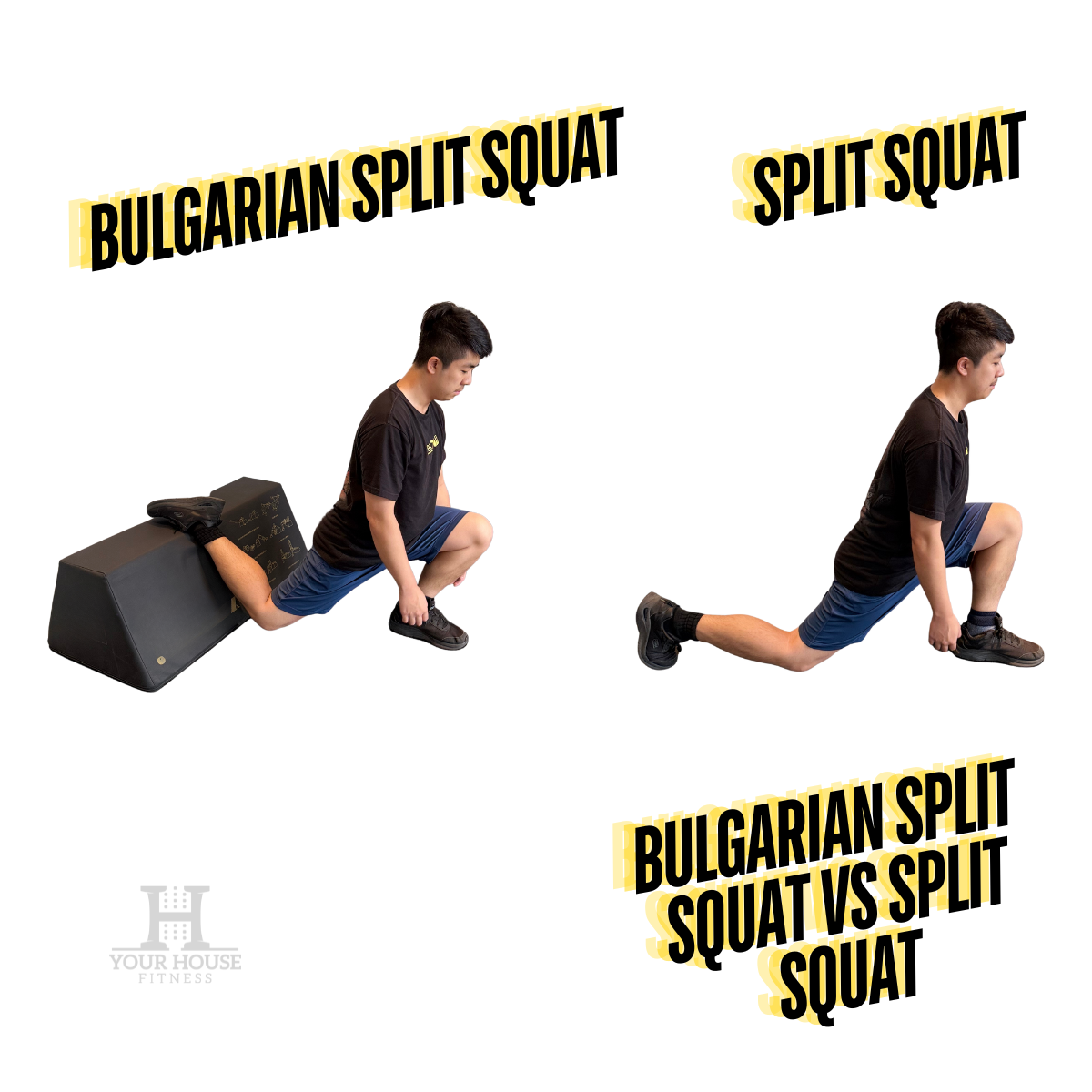Bulgarian Split Squat vs Split Squat: Key Differences and How to Do Them
Table of Contents
What’s the Difference Between a Split Squat and a Bulgarian Split Squat?
A split squat is a lower body exercise performed with both feet on the ground, one leg forward and the other back. It’s great for building strength and balance, but your range of motion is often limited because your back knee eventually touches the floor.
A Bulgarian split squat is similar but with one key difference: your back foot is elevated on a platform, bench, or step. This elevation allows for a deeper range of motion, giving your muscles a greater stretch and increased activation.
Benefits of the Split Squat:
Builds unilateral leg strength and balance
Improves hip mobility and core stability
Easier to set up and perform compared to the Bulgarian
Great for beginners and rehab work
Lower back–friendly alternative to heavy squats
Benefits of the Bulgarian Split Squat:
Greater range of motion for deeper stretch
Increased glute and quad activation
Improves balance and athletic performance
Strengthens hip stabilizers
Helps correct leg muscle imbalances faster
Common Setup Challenges and Tips
Many people find the Bulgarian split squat setup harder than the movement itself. If your stance is too short or too long, you can lose balance or strain your knees. Here’s a tip for perfect positioning:
Start in a sprinter stance with your hands resting on a block or bench.
Place your working leg forward and lift your back foot onto the platform so the bend of your ankle rests comfortably.
Adjust your stride length until you feel stable and can lower yourself without discomfort.
The Bulgarian split squat is a challenging but highly effective lower body exercise that builds strength, stability, and mobility. Whether you’re looking to progress from a standard split squat or simply want to add variety to your leg workouts, mastering this move can pay off in both performance and injury prevention.

